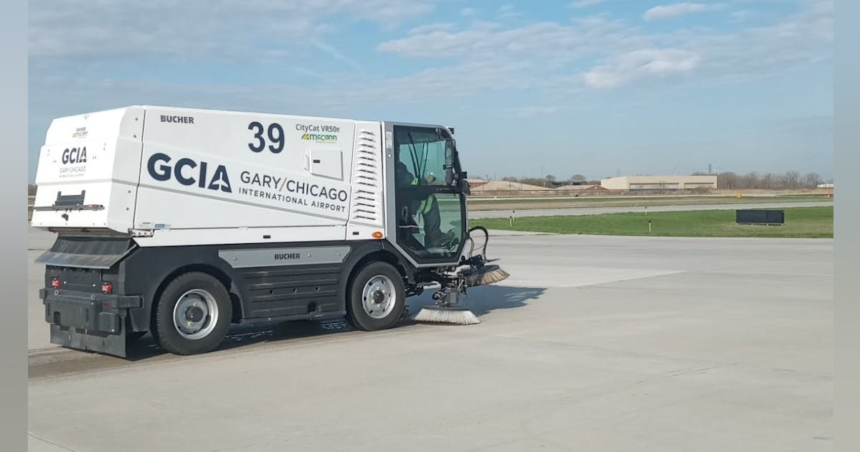Infrastructure, Cost, and Lessons for Peers
One of the core challenges in implementing electric airfield equipment is infrastructure. The VR50e requires three-phase power to support overnight charging of its high-capacity battery pack. GYY had to coordinate with its local utility to make this power available in its maintenance facility.
“Charging infrastructure is often the limiting factor,” Parsons said. “Most airports are not yet built to support large-scale electrification. In cases like GYY, it takes coordination and upfront investment, but the long-term benefits are real.”
To address these hurdles, vendors such as Fortbrand offer interim solutions, including mobile charging carts that can service multiple units using portable power sources. “It’s not uncommon to use diesel-powered generators to charge electric equipment during the transition phase,” Carl noted. “It’s not perfect, but it allows airports to take the first steps while planning permanent infrastructure.”
From a financial standpoint, GYY’s sweeper was entirely funded by grant dollars, covering both the vehicle and the required charger. While the up-front cost of electric sweepers remains roughly 2 to 2.5 times that of diesel models, Vicari said operational savings are beginning to emerge. “We’re paying about half as much to charge it as we would to fuel a diesel unit. That adds up over time.”
Parsons projected a typical return on investment within 24 months, depending on local electricity rates and usage frequency. “When you factor in lower maintenance costs and the expected battery life—up to 15 years with 75% charge retention—we estimate 25–30% lower total cost of ownership compared to diesel,” he said.
Beyond ROI, GYY sees the sweeper as a platform to influence others. “We’re sending a message to our community and to our tenants that electrification is achievable—even at a smaller airport,” Vicari said. “That kind of leadership has value beyond the numbers.”
A Broader Industry Signal
The move by GYY adds to a growing trend among mid-sized airports exploring electric airfield equipment for operational areas beyond baggage tugs and belt loaders. While electrification has long been concentrated among the nation’s largest hubs, Vicari believes the technology has reached a point of scalability.
“The sweeper runs all day and charges at night. There’s no performance trade-off, so the size of the airport really shouldn’t be a limitation,” he said. “As long as the operational window makes sense, and the infrastructure can support it, it’s a viable solution.”
Parsons acknowledged that many airports remain cautious. “Airports are long-cycle buyers. They expect equipment to last 15 to 20 years,” he said. “If they make the wrong choice, they’re stuck with it for decades. That’s why we offer leasing and upgrade options—to help manage that risk.”
The experience at GYY highlights a useful template: combine funding access with strong vendor support and invest in equipment that aligns with specific operational needs. “Electric doesn’t work for every application—yet,” Vicari said. “But for sweepers and other predictable-use vehicles, it’s a compelling case.”
Scalable, Practical, and Here to Stay
GYY’s successful integration of an electric ramp sweeper showcases the potential of airfield equipment electrification for a wider range of airports. With the right mix of planning, funding, and operational alignment, zero-emission airside equipment is not only possible—it’s practical.
“Electrification is no longer a future concept. It’s a present-day solution for the right applications,” Parsons said. “The airports that plan ahead will be the ones best positioned to lead.”
For GYY, the project is more than a pilot—it’s a platform for broader change. As the airport eyes additional electric vehicles for airfield service, the ramp sweeper stands as a quiet but powerful signal of where the industry is headed.











